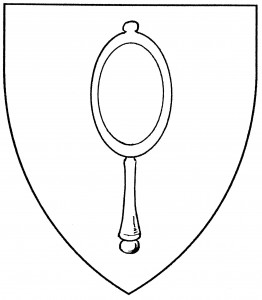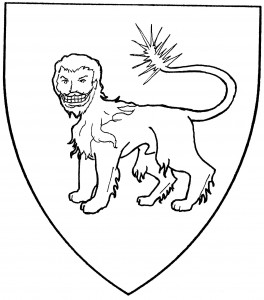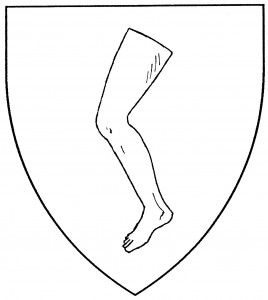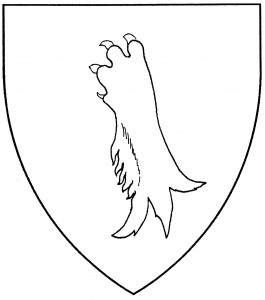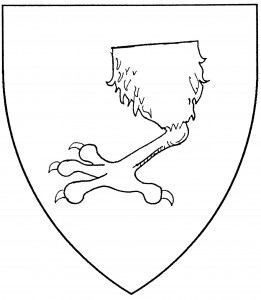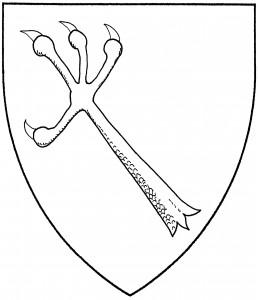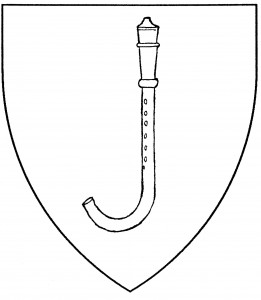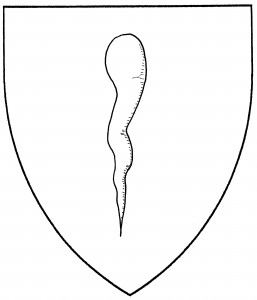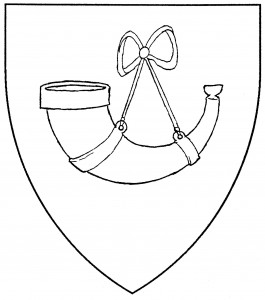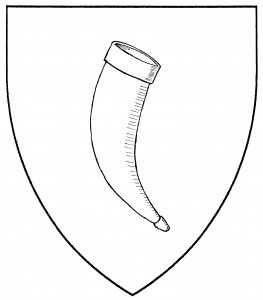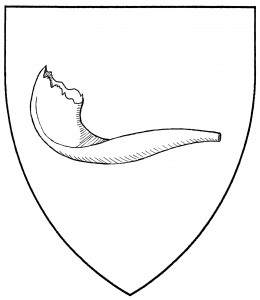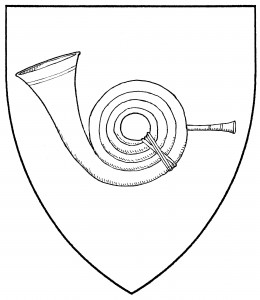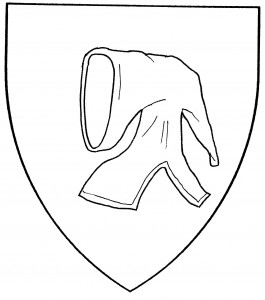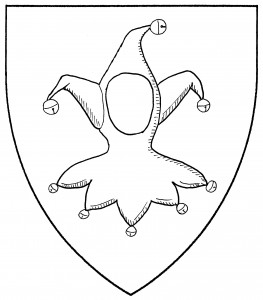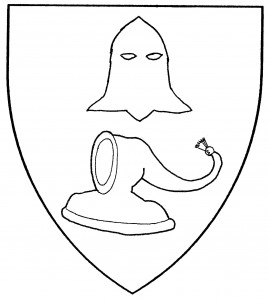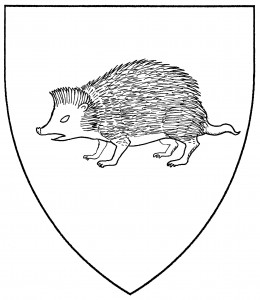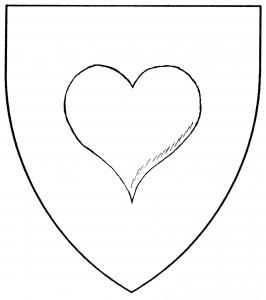The following abbreviations are used in the Pictorial Dictionary to refer to specific frequently-cited sources:
[ANA1]
Humphery-Smith, C. R. Anglo-Norman Armory. Family History, 1973.
[ANA2]
Humphery-Smith, C.R. Anglo-Norman Armory Two: An ordinary of 13th Century armorials. Institute of Heraldic and Genealogical Studies, 1984.
[Armeria]
Pidal de Navascues, F.M. Libro de Armeria del Reino de Navarra (Book of Arms of the Kingdom of Navarre). La Gran Enciclopedia Vasca, Bilbao, 1974 (orig. compiled mid-16th C).
[Asp2]
London, H.S., & Tremlett, T. Aspilogia II: Rolls of Arms temp. Henry III. Society of Antiquaries, 1967.
[Bedingfeld]
Bedingfeld, H., & Gwynn-Jones, P. Heraldry. Chartwell Books, 1993.
[Bossewell]
Bossewell, J. Workes of Armorie. Da Capo Press, reprinted 1969 (orig. pub 1572).
[Brault]
Brault, G. Early Blazon: Heraldic Terminology in the 12th and 13th Centuries. Oxford University Press, 1972.
[Brault2]
Brault, G. Eight Thirteenth Century Rolls of Arms. Pennsylvania State University Press, 1973.
[BSB]
Bayerische Staatsbibliothek (National Library of Bavaria). Online resource of scanned documents from the Bavarian National Library collection, including many heretofore unavailable rolls of arms. At http://www.digitale-sammlungen.de/index.html?c=startseite&l=en&projekt= with search capabilities.
[Conz.Const.]
von Richtental, U. Chronicle of the Council of Constance (Das Concilium zu Constenz). Compiled 1413; illustrated and published 1536.
[DBA1]
Chesshyre, H., & Woodcock, T. Dictionary of British Arms: Medieval Ordinary, vol.1. Society of Antiquaries of London, 1992.
[DBA2]
Woodcock, T., & Grant, J. Dictionary of British Arms: Medieval Ordinary, vol.2. Society of Antiquaries of London, 1996.
[DBA3]
Woodcock, T., & Flower, S. Dictionary of British Arms: Medieval Ordinary, vol.3. Society of Antiquaries of London, 2009.
[DBA4]
Woodcock, T., & Flower, S. Dictionary of British Arms: Medieval Ordinary, vol.4. Society of Antiquaries of London, 2014.
[de Bara]
de Bara, H. Le Blason des Armoiries (The Blazon of Armory). Chez Jean de Bonnot, reprinted 1975 (orig. pub. 1581).
[Dennys]
Dennys, R. The Heraldic Imagination. Clarkson N. Potter, 1975.
[Dennys CoA]
Annotations and amendments to Dennys, The Heraldic Imagination, in a book review by A. Colin Cole. Coat of Arms II(98), Summer 1976.
[Franklyn]
Franklyn, J., & Tanner, J. An Encyclopædic Dictionary of Heraldry. Pergamon Press, 1970.
[Friar]
Friar, S. A Dictionary of Heraldry. Harmony Books, 1987.
[GATD]
Le grand armorial équestre de la Toison d’Or (Great Armorial of the Order of the Golden Fleece). Edited by Michel Pastoureau and Michel Popoff. Éditions du Gui, 2001 (orig. compiled c.1460).
[Gelre]
Heinenzoon, C. The Armorial de Gelre. Edited by C. Van den Bergen et al. Jan van Helmont, 1992 (orig. pub. c.1370).
[Grove]
Sadie, S., et al. The New Grove’s Dictionary of Music and Musicians. Grove’s Dictionaries, Inc., 2nd edition, 2001.
[Guide]
Fox-Davies, A. C. A Complete Guide to Heraldry. Revised and annotated by J.P. Brooke-Little. Bonanza Books, 1985 (orig. pub. 1909).
[Guillim1], [Guillim2]
Guillim, J. A Display of Heraldrie. London. 1st edition, 1610 [Guillim1]; 2nd edition, 1632 [Guillim2].
[Gwynn-Jones]
Gwynn-Jones, P. The Art of Heraldry: Origins, Symbols and Designs. Prospero Books, 1998.
[Hawley]
Hawley, W. & Chappelear, K. Mon: The Japanese Family Crest. W. M. Hawley Press, 1976.
[HB]
Fox-Davies, A. C. Heraldic Badges. John Lane, 1907.
[HCE]
Heralds’ Commemorative Exhibition, 1484-1934. English College of Arms, London, 1936.
[Her.Alph]
Brooke-Little, J. P. An Heraldic Alphabet. Arco Publishing, 2nd edition, 1975.
[Hope]
Hope, Wm. St.John. A Grammar of English Heraldry. Cambridge University Press, 2nd edition, 1953.
[Hope2]
Hope, Wm. St.John. Heraldry for Craftsmen and Designers. Pitman & Sons, 1929.
[Ingeram]
Ingeram, H. The Ingeram Codex (also called the Codex Cotta after one of its owners). Edited by C. Becher and O. Gamber. Hermann Böhlaus, 1986 (orig. compiled c.1450).
[Legh]
Legh, G. The Accidens of Armory. London, 1576.
[Mayer]
Mayer, L.A. Saracenic Heraldry. Oxford University Press, 1933.
[Neubecker]
Neubecker, O. Heraldry: Sources, Symbols and Meaning. McGraw-Hill Books, 1976.
[Nobreza]
Godinho, A. Livro da Nobreza e Perfeicam das Armas (Book of Nobility). Edited by M. de Albuquerque and J.P. de Abreu e Lima. Edicoes Inapa, 1987 (orig. pub. c.1540). [Nobreza]
[NW]
Raber, V. Vigil Rabers Neustifter Wappenbuch. Edited by H.W. Arch. Verlag A. Weger, Brixen, 2001 (orig. compiled mid-16th C.).
[Parker]
Parker, J. A Glossary of Terms Used in Heraldry. Charles E. Tuttle, reprinted 1970 (orig. pub. 1894).
[Pastoureau]
Pastoureau, M. Traité d’Héraldique. Picard, 2nd edition, 1993.
[RH]
Holme, R. Randle Holme’s Book. Edited by Oswald Barron as “A Fifteenth Century Book of Arms”, The Ancestor, 1902 (orig. compiled c.1460).
[Scheibler]
Scheibler, first name unknown. Scheibler’schen Wappenbuch (Scheibler’s Roll of Arms), c.1450. Online at http://commons.wikimedia.org/wiki/Scheibler_Armorial.
[Scots]
Campbell, C. The Scots Roll: A Study of a Fifteenth Century Roll of Arms. Heraldry Society of Scotland, 1995 (orig. compiled c.1455).
[Siddons]
Siddons, M. Heraldic Badges in England and Wales. Boydell Press, 2009.
[Siebmacher]
Siebmacher, J. The Roll of Arms (Dem Wappenbuch). Edited by Horst Appuhn. Harenberg, 1989 (orig. pub. 1605).
[TJ]
Jenyn, T. Thomas Jenyn’s Book. Heraldry Society of Scotland, Peebles, 1983 (orig. compiled c.1410).
[Triv]
Maspoli, C. Stemmario Trivulziano. Niccolo’ Orsini de Marzo, Milan, 2000 (orig. compiled mid-15th C.).
[Volborth]
von Volborth, C.A. Heraldry: Customs, Rules and Styles. Blandford Press, 1981.
[Walden]
de Walden, H. Banners, Standards and Badges, from a Tudor Manuscript in the College of Arms. The de Walden Library, 1904 (orig. compiled c.1510).
[Woodcock & Robinson]
Woodcock, T., & Robinson, J. The Oxford Guide to Heraldry. Oxford University Press, 1988.
[Woodward]
Woodward, J., & Burnett, G. A Treatise on Heraldry, British and Foreign. Charles E. Tuttle, reprinted 1969 (orig. pub. 1896).
[Zurich]
The Zurich Roll of Arms (Wappenrolle von Zürich, Rôle d’Armes de Zurich). Edited by Michel Popoff. Léopard d’Or, 1986 (orig. compiled c.1340).
